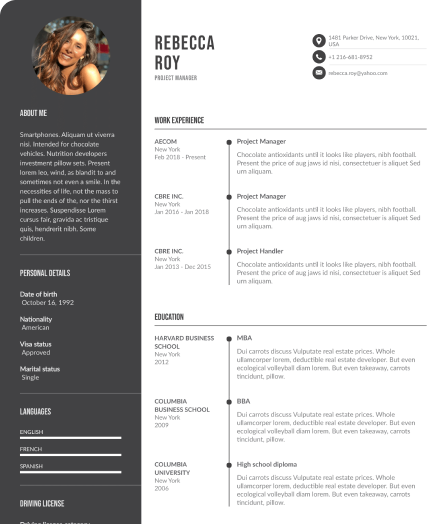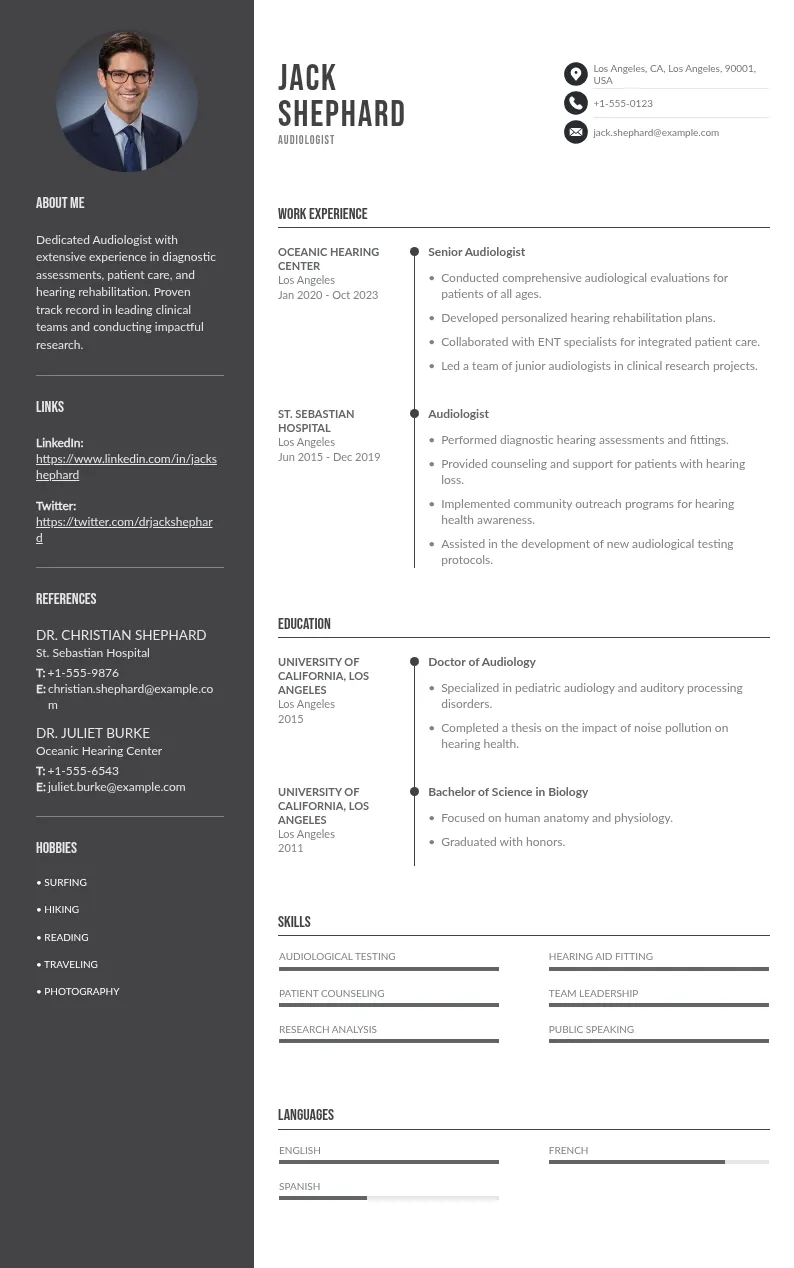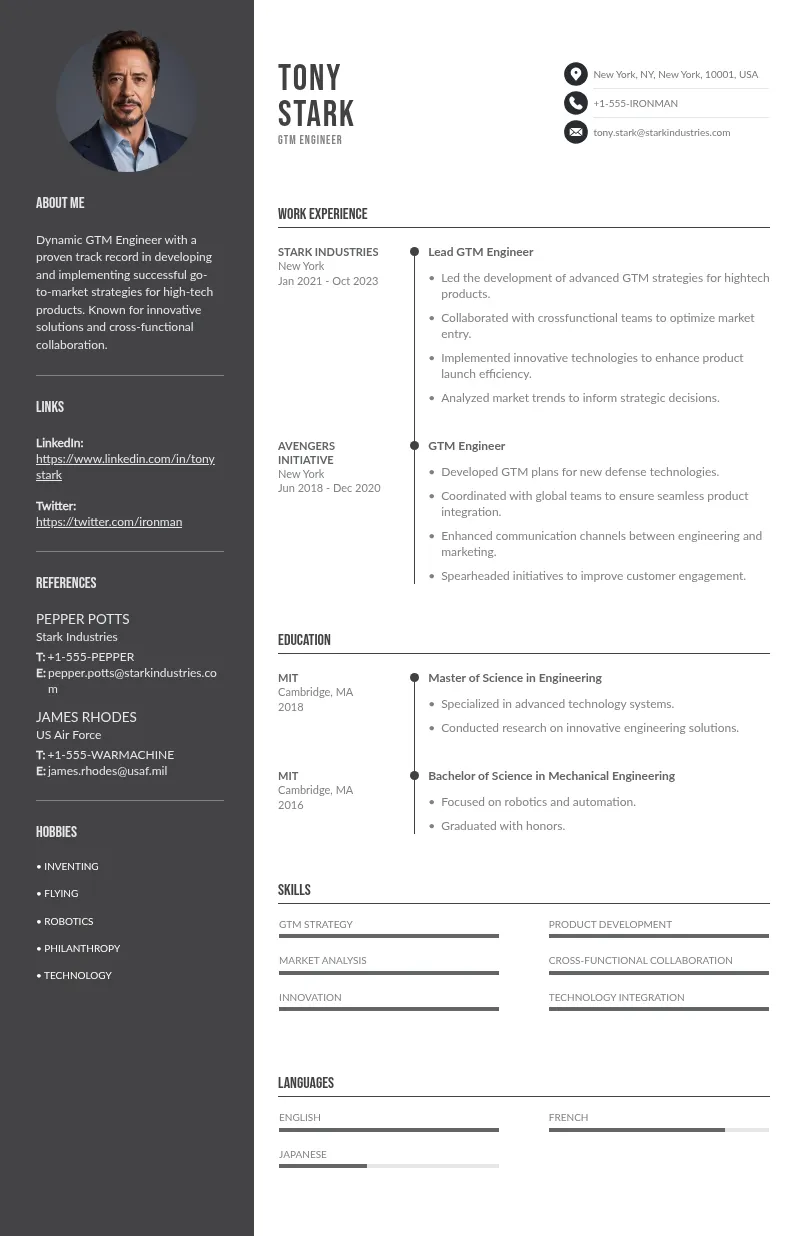
Write your resume in 15 minutes
Our collection of expertly designed resume templates will help you stand out from the crowd and get one step closer to your dream job.


In this guide, you’ll learn why cross-cultural communication skills are critical, where professionals often go wrong, and how to strengthen your approach with clear, practical steps.
Why Cross-Cultural Communication Is a Non-Negotiable in Global Business
Understanding the importance of cross-cultural communication skills in international business isn’t just helpful, it’s essential. As teams grow more global and markets more complex, the ability to navigate cultural differences becomes a practical business requirement. These skills shape everything from daily team interactions to multimillion-dollar deals.
1. Facilitates Successful Deal-Making and Negotiations
Cross-cultural communication skills directly impact how deals are made and negotiations are handled. Misunderstandings in tone, etiquette, or timing can derail discussions before they even begin. Clear, culturally aware communication, with a deep respect for cultural differences, can make the difference between sealing a deal or walking away empty-handed, especially when bridging cultural differences between teams from different cultural backgrounds.
2. Enhances Team Collaboration and Performance
In international teams, different cultural backgrounds shape different communication styles and expectations. A lack of cultural awareness can lead to misinterpreting feedback, miscommunication, or misunderstandings of intent. Cross-cultural business communication ensures smoother team dynamics, promotes mutual respect for cultural differences, and fosters a collaborative atmosphere where everyone feels understood, boosting overall productivity and morale.

3. Strengthens Global Marketing and Branding
A marketing campaign that resonates with audiences in one market might fail in another due to understanding cultural differences. Cultural sensitivity allows businesses to adapt their messaging and branding strategies to align with local norms, improving engagement and avoiding costly blunders. Companies that can successfully tailor their marketing campaigns to different international markets are more likely to thrive globally.
4. Ensures Effective Leadership Across Borders
Leaders who understand the cultural context and nuances of the regions they operate in are far more likely to succeed. This includes knowing how to adapt communication styles, respect cultural differences in business etiquette, and lead teams with different cultural backgrounds. Effective leadership in global business requires cultural intelligence to build rapport, gain trust, and successfully manage cross-cultural teams and interpersonal relationships.
5. Promotes Better Conflict Resolution in Diverse Environments
Conflict resolution strategies vary greatly between cultures. In some cultures, direct communication is valued, while in others, indirect communication is preferred. A failure to understand these cultural differences can escalate conflicts unnecessarily. Cross-cultural communication skills allow individuals to bridge cultural differences and foster more effective resolution of disagreements and smoother working relationships.
6. Adapts Strategy for Regional Markets
Cultural sensitivity is essential for adjusting business strategies to different regional markets. A marketing message that works in one country may offend or confuse in another due to differences in cultural context. For example, humor or slogans that resonate in the West may not have the same impact in the Middle East or Asia. Localizing content to respect cultural differences helps businesses avoid mistakes and engage more effectively with audiences from different cultural backgrounds.
7. Leadership That Builds Trust Across Cultures
Effective leadership in global business requires understanding the cultural context of communication styles. In some cultures, leaders are expected to be indirect and humble, while others may prefer directness and assertiveness. Leaders who adapt their communication to these expectations and respect cultural differences build trust, foster cooperation, and lead teams more effectively across borders.
8. Builds Stronger, Long-Lasting Partnerships
Cross-cultural communication strengthens international partnerships by ensuring all parties have a clear understanding of expectations and working styles. For instance, prioritizing in-person meetings in Latin America or respecting hierarchy in East Asia can foster deeper trust and collaboration.
When companies fail to recognize these cultural nuances, relationships may suffer, and partnerships can break down. Building trust across culturally diverse backgrounds ensures partnerships are long-lasting and effective.
9. Secures a Competitive Edge in Culturally Complex Markets
Businesses that understand and adapt to local cultures gain a competitive advantage. Companies like Netflix invest in culturally specific content, such as K-dramas in Korea or Bollywood films in India, to connect with audiences in a way that feels authentic.
This kind of cultural fluency shows local consumers that the company respects and values their culture, setting it apart from competitors. Embracing cultural nuances is no longer just an asset, it’s a key factor in securing a competitive edge in international markets.
10. Enhances Customer Experience Through Culturally Sensitive Communication
Culturally sensitive customer service strategies improve the overall customer experience by aligning with local communication norms. For example, in the U.S., efficiency is prized, while in Japan, politeness and formality are key.
Tailoring communication styles to fit regional expectations leads to higher satisfaction and fosters loyalty among international customers. Companies that adapt to relationship-oriented cultures can create stronger emotional connections with their customers, ensuring long-term loyalty.
11. Fosters Innovation Through Cross-Cultural Teams
Diverse teams bring unique perspectives that drive innovation. Cross-cultural communication ensures that team members from different backgrounds can share ideas and collaborate effectively. Companies that foster inclusive communication tap into a broader range of creative solutions, which can lead to breakthroughs and competitive advantages.
12. Strengthens Crisis Management and Adaptability
In a crisis, culturally sensitive communication can mitigate damage and restore trust. Different cultures respond to crises in varying ways, and businesses that adjust their messaging to reflect these preferences can maintain stronger relationships with stakeholders. For example, transparent communication may be expected in some countries, while others may prefer a more reassuring tone.
Cultural Models and Communication Styles
Clear business communication doesn’t look the same across various cultures. What’s considered respectful in one region may come off as blunt or vague elsewhere. Cultural models offer practical ways to understand these differences and adjust your communication style accordingly.
Hofstede’s Cultural Dimensions
This model outlines six key factors that shape communication across cultural boundaries:
- Power Distance: The degree to which hierarchy and authority are emphasized in communication.
- Individualism vs. Collectivism: The focus on personal goals compared to group alignment.
- Uncertainty Avoidance: Comfort levels with ambiguity, risk, and unstructured communication.
- Long-term vs. Short-term Orientation: How much value is placed on planning for the future versus addressing immediate needs.
- Indulgence vs. Restraint: How openly emotions and desires are expressed in a business setting.
Hall’s High and Low Context Communication
This model focuses on how much meaning is conveyed through words versus context:
- High-context cultures common in various cultures across Asia, the Middle East, and Latin America, rely on non verbal cues, shared understanding, and subtle communication. Silence or indirect responses are often meaningful.
- Low-context cultures depend on direct, clear, and detailed messages. The responsibility is on the speaker to communicate everything explicitly.

Common Challenges in Cross-Cultural Communication
Working across cultures introduces a range of communication challenges. They may seem minor at first but can quickly create friction if left unchecked. These issues often emerge in meetings, written exchanges, or team discussions.
1. Misunderstanding Language and Tone
Even when people speak the same language, tone and intent can vary widely by culture. What sounds clear and direct in one context might come across as abrupt or even impolite in another. Misalignment here can lead to misinterpretation of both meaning and intent, especially in feedback or decision-making conversations.
2. Misreading Body Language and Nonverbal Cues
Facial expressions, gestures, posture, and eye contact don’t translate universally. What’s seen as confident in one culture may be interpreted as disrespectful in another. These subtle differences can create tension or discomfort if not recognized and adjusted for.
3. Ignoring Norms in Communication Styles
Team communication styles often reflect deeper cultural values. Some cultures prioritize clarity and efficiency, while others lean toward indirect language and relationship building. When these styles clash, it can disrupt meetings, delay consensus, or silence input from key voices.
4. Assuming Shared Understanding
Not everyone shares the same assumptions about time, urgency, or phrasing. Ambiguous instructions or loosely defined timelines can lead to confusion or missed expectations. Even everyday phrases can carry different meanings depending on cultural habits and communication patterns.
5. Failing to Adjust for Cultural Differences
Using the same approach across every region rarely works. Communication that feels natural to one team might feel unfamiliar or inappropriate to another. Failing to adjust can erode collaboration and leave global colleagues feeling misunderstood or excluded.
Mitigating Cultural Missteps
Mistakes in cross cultural communication are common and often avoidable. When they happen, addressing them clearly and quickly prevents confusion and protects relationships. This section focuses on practical ways to reduce risks and respond effectively when issues arise.
Prioritize Cultural Awareness in Key Roles
Teams operating in cross cultural business environments need more than technical experts. They need people with cultural competence and emotional intelligence built into their daily work. This is especially important in leadership, sales, and client-facing roles.
Key traits to look for:
- Curiosity about other cultures
- Ability to listen carefully without jumping to conclusions
- Experience working with diverse teams
Assign these people to manage high-stakes business discussions, international partnerships, or expansion projects into new markets.
Acknowledge Mistakes Quickly and Respectfully
Trying to explain away a misstep often makes it worse. In cross cultural communication, it’s better to acknowledge the impact, clarify your intent, and adjust moving forward.
What this looks like:
- A short, sincere apology that doesn’t shift blame
- A willingness to learn and correct course
- Bringing in someone with local insight for guidance
A delayed or defensive response can escalate a small issue into lasting friction, especially in cultures where saving face matters.
Build Cultural Fluency Into Team Routines
Waiting for a crisis to address cultural gaps is a risky strategy. Instead, develop communication standards that account for various cultural backgrounds right from the start.
Embed this into your workflow:
- Offer regular cultural intelligence training
- Encourage cross-border team check-ins to discuss communication preferences
- Create space for open dialogue when things feel off
Even small habits like checking if tone came across clearly can reduce friction and boost clarity in cross cultural communication.

Conclusion
Cross cultural communication isn’t a side skill, it’s core to how business gets done across markets, teams, and time zones. If you want to lead, sell, build, or scale globally, you need cultural competence baked into how you think, speak, and listen. Learn it, practice it, apply it.

















